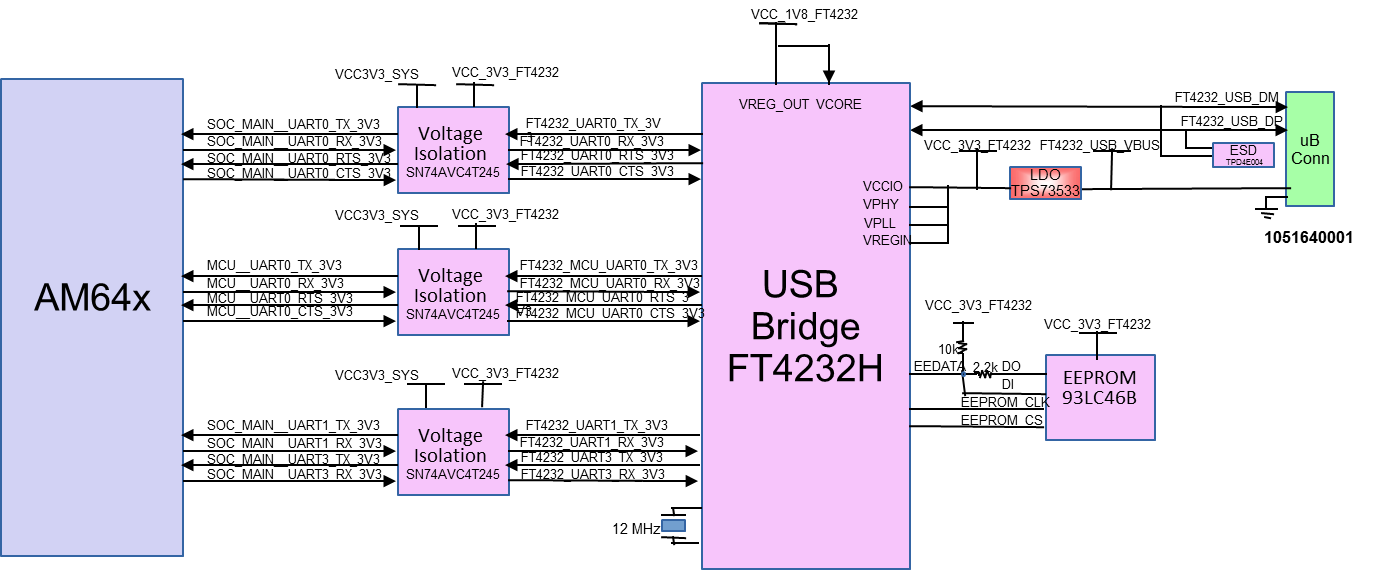SPRUJ63A September 2022 – October 2023
- 1
- Trademarks
- 1Introduction
- 2Important Usage Notes
-
3System Description
- 3.1 Key Features
- 3.2 Functional Block Diagram
- 3.3 Power-On/Off Procedures
- 3.4
Peripheral and Major Component
Description
- 3.4.1 Clocking
- 3.4.2 Reset
- 3.4.3 Power
- 3.4.4 Configuration
- 3.4.5 JTAG
- 3.4.6 Test Automation
- 3.4.7 UART Interfaces
- 3.4.8 Memory Interfaces
- 3.4.9 Ethernet Interface
- 3.4.10 Display Interface
- 3.4.11 USB 2.0 Interface
- 3.4.12 PCIe Interface
- 3.4.13 High Speed Expansion Interface
- 3.4.14 CAN Interface
- 3.4.15 Interrupt
- 3.4.16 ADC Interface
- 3.4.17 Safety Connector
- 3.4.18 SPI Interfaces
- 3.4.19 I2C Interfaces
- 3.4.20 FSI Interface
- 4Known Issues and Modifications
- 5References
- 6Revision History
3.4.7 UART Interfaces
Four UART ports of the SoC are interfaced with FT4232H for UART-to-USB functionality and terminated on a micro B connector (J26). When the EVM is connected to a Host using the provided USB cable, the host can establish a Virtual Com Port which can be used with any terminal emulation application. The FT4232H is bus powered. Virtual Com Port drivers for the FT4232H can be obtained from https://www.ftdichip.com/Products/ICs/FT4232H.htm.
The FT_Prog has three modes of operation: Idle Mode, Program Mode and Edit Mode. FT_Prog programming parameters can be saved in files referred as EEPROM templates. Once defined, these EEPROM templates can be loaded by FT_Prog and used to program EEPROMs.
- Idle Mode is the initial mode of operation when the program is launched.
- Edit Mode is used to edit the settings of an EEPROM template.
- Program Mode is used to Program and Erase the device EEPROMs.
 Figure 3-13 AM64x/AM243xUART Interfaces
Figure 3-13 AM64x/AM243xUART Interfaces